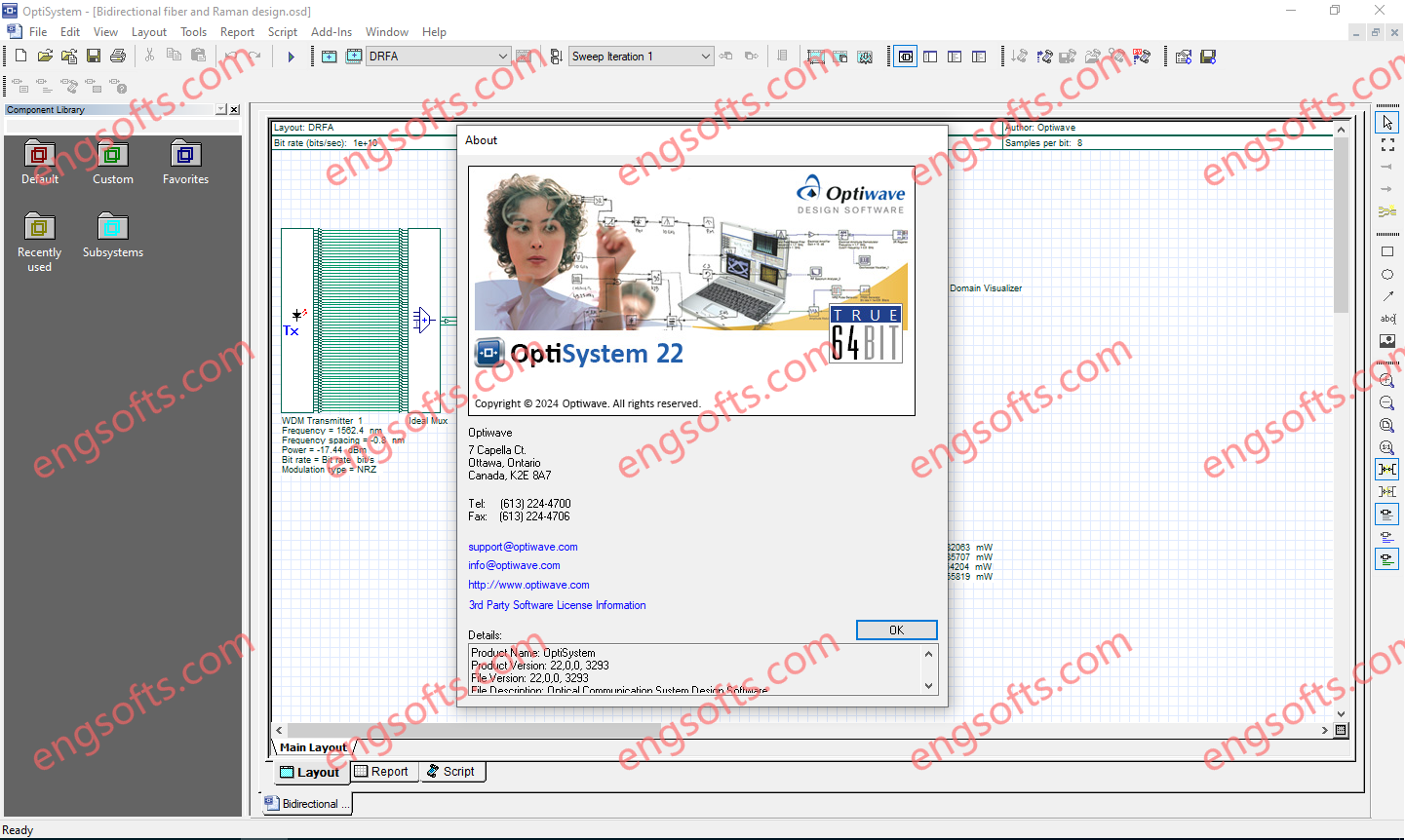Optiwave announces OptiSystem 22.1, a major update to its optical system simulation platform, featuring advanced photonic integrated circuit (PIC) design/system characterization tools, machine learning capabilities, and workflow improvements.
Optiwave OptiSystem 22.0 Tested Picture
Key Highlights
- Optical S-Parameters: Import S-parameter files (including Touchstone) from OptiBPM, OptiFDTD, or third-party tools to model PICs in system-level simulations. Dynamically generates ports for seamless integration.
- PIC Waveguide (W.G): Model passive or electrically controlled optical waveguides with customizable refractive indices.
- Machine Learning Tool: Train systems using eye diagrams (internal or external) to predict performance and optimize parameters for optical networks.
Workflow Enhancements
- Visualizers’ Quick View in project browser: Toggle between single-iteration or bundled data displays.
- VCSEL Laser Measured: Laser Linewidth Enhancement Factor now supports negative chirp analysis.
- Ring Lasers: Design using Er-Yb Codoped Waveguides.
- ASE Modal Noise: Spatial Demultiplexer outputs ASE per mode.


